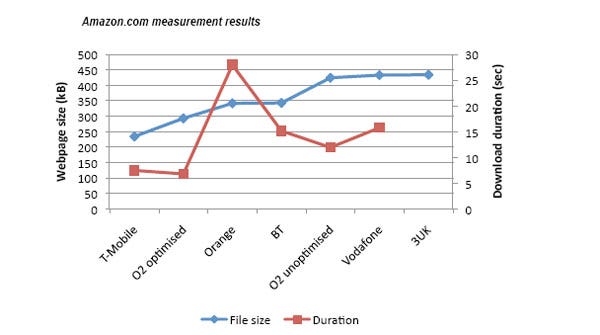Optimisation to breathe new life into 3G networks
Mobile broadband is fast becoming the key revenue driver for operators, yet key players are providing a sluggish user experience based on webpage size and download performance.
October 28, 2009

Mobile broadband is fast becoming the key revenue driver for operators, yet key players are providing a sluggish user experience based on webpage size and download performance.
Subscribers to mobile broadband services worldwide reached 186 million in 2008 and that figure is set to soar by the end of 2009 thanks to the adoption of smartphones like the Apple iPhone, Google‘s Android and the Palm Pre. Conversely, the impact of file size and download duration to mobile broadband operator networks is tremendous in their efforts to reduce traffic and increase capacity.
Research released by Informa Telecoms & Media and mobile internet platform provider Bytemobile this week highlights the effect of download speeds and file size on user experience in the UK.
The researcher tested the UK’s mobile broadband networks including O2, Vodafone, T Mobile, 3UK and Orange, and MVNO offerings from BT and Virgin Mobile between June and August of 2009. The research measured total webpage size and download time with Amazon, Facebook, Lycos, Orange, Starbucks and Informa’s homepages using two netbooks when networks were under the most strain across five locations in Greater London.
A selection of urban sites were chosen, including dense office locations during mid-morning hours and lunchtime, residential areas during evening hours and train stations during early morning hours. Netbooks were chosen in favour of notebooks since operators are now bundling them with mobile broadband connections. Moving forward, it is expected that this set up will be one which most users are likely to be using outdoors with a mobile broadband connection.
The majority of mobile broadband connections were made over HSPA (3.6Mbps) albeit this maximum speed was never reached. Some USB dongles actually supported higher speeds (7.2Mbps) but none of the networks measured connected over these faster speeds (theoretical speeds were logged during the actual measurements and were confirmed to be a maximum of 3.6Mbps).
Measurements of the Amazon.com website illustrated consistent webpage size measurements, with T-Mobile, followed by O2, Orange and BT. The Amazon webpage is dynamic and changes each time it is downloaded, explaining the inconsistency in file sizes for the operators following T-Mobile and O2 prepaid. Download duration in these measurements was inconsistent due to several factors, including traffic which seems to have been higher in the Orange network, hence the spike in the graph.

amazon-graph
During the tests, T-Mobile, O2, BT and Vodafone – which all use optimisation software for their mobile broadband services -consistently showed a better performance when compared with the rest of UK operators, illustrating that optimisation plays an important role in reducing traffic and indirectly increasing capacity.
Measurements indicate that file size is significantly reduced when optimisation is used, without any noticeable difference in image quality from a user perspective. In several cases where static webpages were measured, file size reduction was as high as 45 per cent, indicating that a significant reduction in transferred data can be achieved. This has an effect similar to that of increasing radio capacity.
File size reduction was up to 52 per cent in several cases with T-Mobile, offering that operator the opportunity to extract additional value from existing radio networks and alleviate capacity bottlenecks without the need for hefty radio infrastructure upgrades. The expenditure required for installing an optimisation solution is an order of magnitude less than actual hardware upgrades – which include radio access and backhaul improvements. Moreover, installing an optimisation solution takes place at the core network instead of the radio access network, thus minimising installation locations and cost. Optimisation solutions can also be integrated without any service disruption.
Informa discovered that the costs of delivering data and subscriber data consumption (including gaming and video) outweigh an operator’s ability to improve network infrastructure as 2 per cent of subscribers consume 50 per cent of network capacity. So how are operators going to address the influx and demand on data? Optimising through packet handing uncovers capacity constraints and compression is not the silver bullet as web content is complex; containing rich animated multimedia images as well as objects like Adobe Flash.
According to Informa, there are three choices available for operators: experience saturation; upgrade hardware at base station level; or deploy cost efficiencies of optimisation without upgrading infrastructure. So operators must consider new ways to enhance the subscriber’s browsing experience, as mobile broadband optimisation cuts file size in half and creates significant increase in radio capacity, more space for new customers and an enhanced browsing experience without disrupting quality.
Download the full whitepaper
About the Author
You May Also Like


.png?width=300&auto=webp&quality=80&disable=upscale)







.png?width=300&auto=webp&quality=80&disable=upscale)


_1.jpg?width=300&auto=webp&quality=80&disable=upscale)